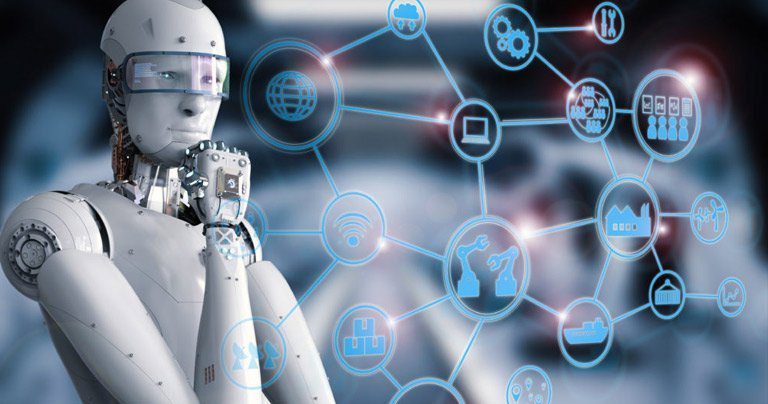Artificial Intelligence (AI) is used by 80 percent of the world’s enterprises in some capacity to help increase efficiency and to help boost productivity within their scope of operations. However, from this standpoint, not all departments are treated equally. The human resources (HR) department is an often overlooked division in the company for technology like this because leadership often views them as just recruiting and benefit managers. Let’s bust that thinking today! Brokers, here are a few ways you can help your clients integrate AI into HR.
What are the benefits for my clients to integrate AI into HR?
AI can be an HR or business operations professional’s best friend, especially during Open Enrollment. Organizations who continue to run this process manually are wasting hours upon hours of their HR department’s time.
How is their time being wasted doing OE manually?
1. They have to go in and review every single one of their employees’ choices and then manually input that information where it needs to go.
Depending on the number of employees and organization has, this could make your HR department incapacitated with data entry work that could easily be optimized using HR automation.
Did we also mention that human error usually leads to spelling flaws which can complicate the whole OE process for the employee affected by the mistake? Oh, did we mention that automation tools like AI help to prevent data double-entry and spelling errors too?
Solution: Through automation, AI will take control of the information gathered through employee entry, then it will place that data in the correct format into required forms. The only thing HR will have to do is quickly verify everything is good and they can send it off when ready!
2. Benefits are confusing.
Most people don’t really understand how they work other than they get some coverage from their place of employment for medical, dental and retirement savings to name a few. What this means is that the HR department will be flooded with questions regarding anything benefits related.

Example questions HR professionals can get bogged down with during OE:
“I have four dependents, which of these five offered health care plans would be in my best interest to sign up for?”
“What’s the difference between a Traditional 401(k) and a Roth 401(k)?”
“How do I sign up for that wellness app our company is offering?”
Again, depending on how many employees and organization has, the process of answering all questions regarding these topics is a job in itself.
Solution: Through AI chatbot technology, most questions asked regarding benefits will be understood. The person asking the question will then be directed to a source that will give them the answer(s) they were looking for.

3. Your client’s HR department has to communicate everything regarding OE, don’t they?
Think of all the messaging they have to get out in hopes that their staff is reading and understanding everything. Emails about open enrollment coming, what’s new and what’s being removed from the benefits packages, emails for company-wide meetings, all sorts of reminder emails, etc., etc.
You guessed it! If an organization wants clear, concise messaging and sent out in high volume to ensure staff is thoroughly prepared; it’s going to take many, many hours to just create and schedule all of them out.
Solution: Through automation, HR can build templates and a drip style email strategy for their staff; ensuring their messages get out in a timely matter, giving their employees the opportunity to take everything in, to ask questions and most importantly—to be prepared.
Recruiting
Integrating AI into HR recruiting can be a very impactful practice for the human resources department to do to. As mentioned above, AI Chatbot technology is becoming more prevalent. Some of these tools are great for gathering candidate data in a conversational format compared to just reading straight from lengthy, boring applications.
Through data attainment, HR will also be able to focus on the candidate experience; improving it by trial-and-error based on the information analyzed over time. This technology can help automate scheduling interviews, answering questions in real-time and provide on-going feedback to candidates. A better recruitment experience will improve the perceptions of candidates interested in working for an organization.
Utilizing AI in the recruitment process can help predict:
- Which candidates are high performers
- Who will stay on the job longer
- Who should receive a promotion
HR automation tools help by reducing turnover, increasing production and improving performance. As you integrate AI into HR, you can expect this technology to focus on hiring the right candidates faster and to accurately identify their fit within your clients’ organization.
Onboarding
As noted from the article—Boosting Human Resources with Business Intelligence Tools—Did you know that up to 20 percent of employee turnover happens in the first 45 days of employment? HR professionals should know that wooing and pleasing staff doesn’t end after they are hired. It is crucial that new employees feel welcomed, supported and happy.
Why?
Because organizational costs of employee turnover are estimated to range between 100-300 percent of the replaced employees’ salary. Shouldn’t strategies for retaining their top talent be a priority for most organizations?
Utilizing AI, organizations will be able to do the following to enhance their onboarding programs:
- Answering new employees’ most pressing or job critical questions
- Suggesting training resources for new hires
- Supplying newbies with instant access to contact information, locations of meeting rooms and dates/times of upcoming events
Employee Engagement
Aside from the addition of your new and talented recruits, organizations must also focus on keeping their current and long-term staff feeling welcomed, supported and happy too. Employee engagement can be improved in a number of ways by integrating AI into HR automation tools.
Those are possible AI & HR automation tools:
- Administrators can automate email or instant messaging replies to common questions asked—resulting in less time spent on answering them by HR staff
- AI can be used to automate other common HR tasks within benefits, workflows, onboarding, job postings, performance and more
By having the ability to automate many of their job functions, HR professionals will be able to add more of a “human touch” to their job responsibilities instead of being locked away in their offices doing long, tedious administrative work.




